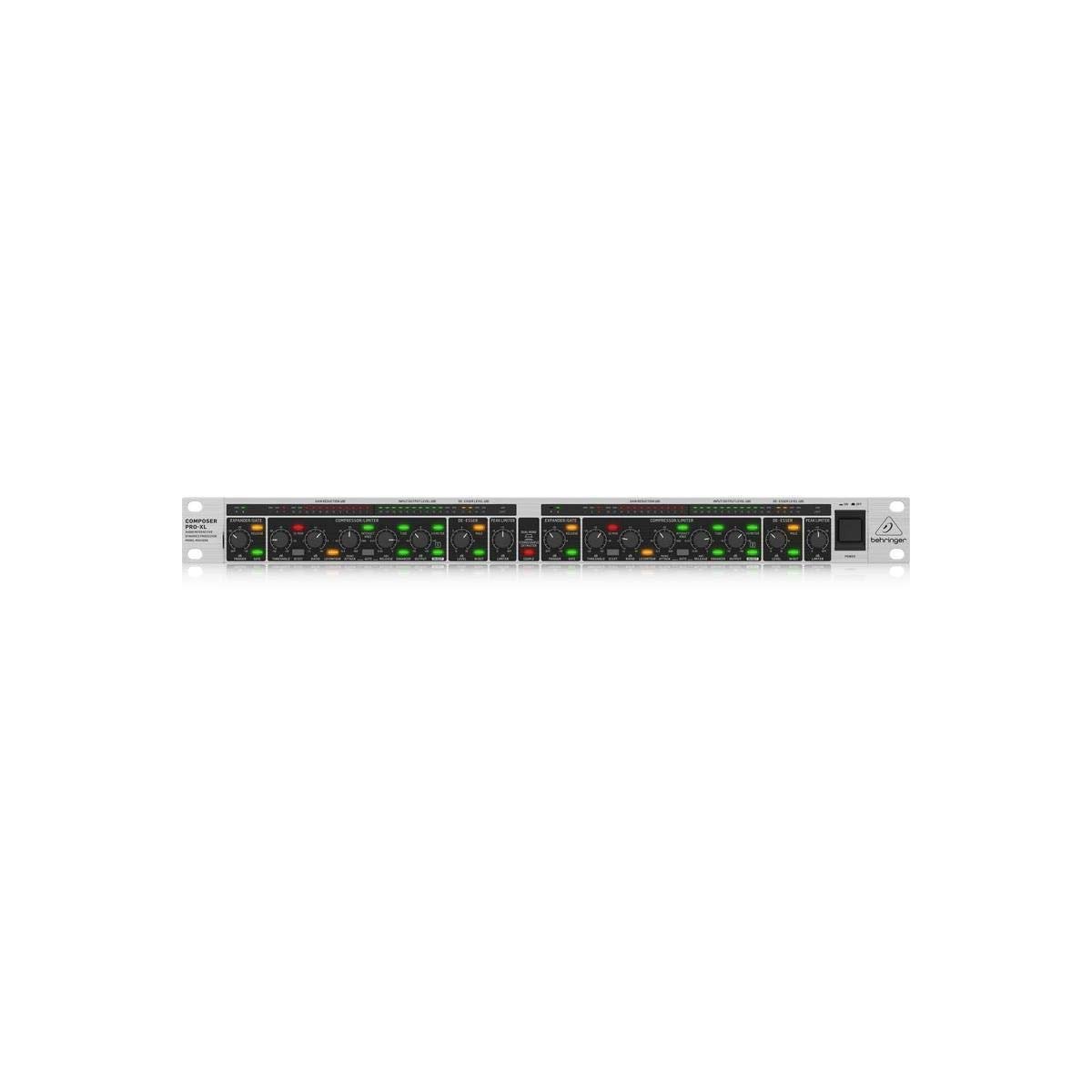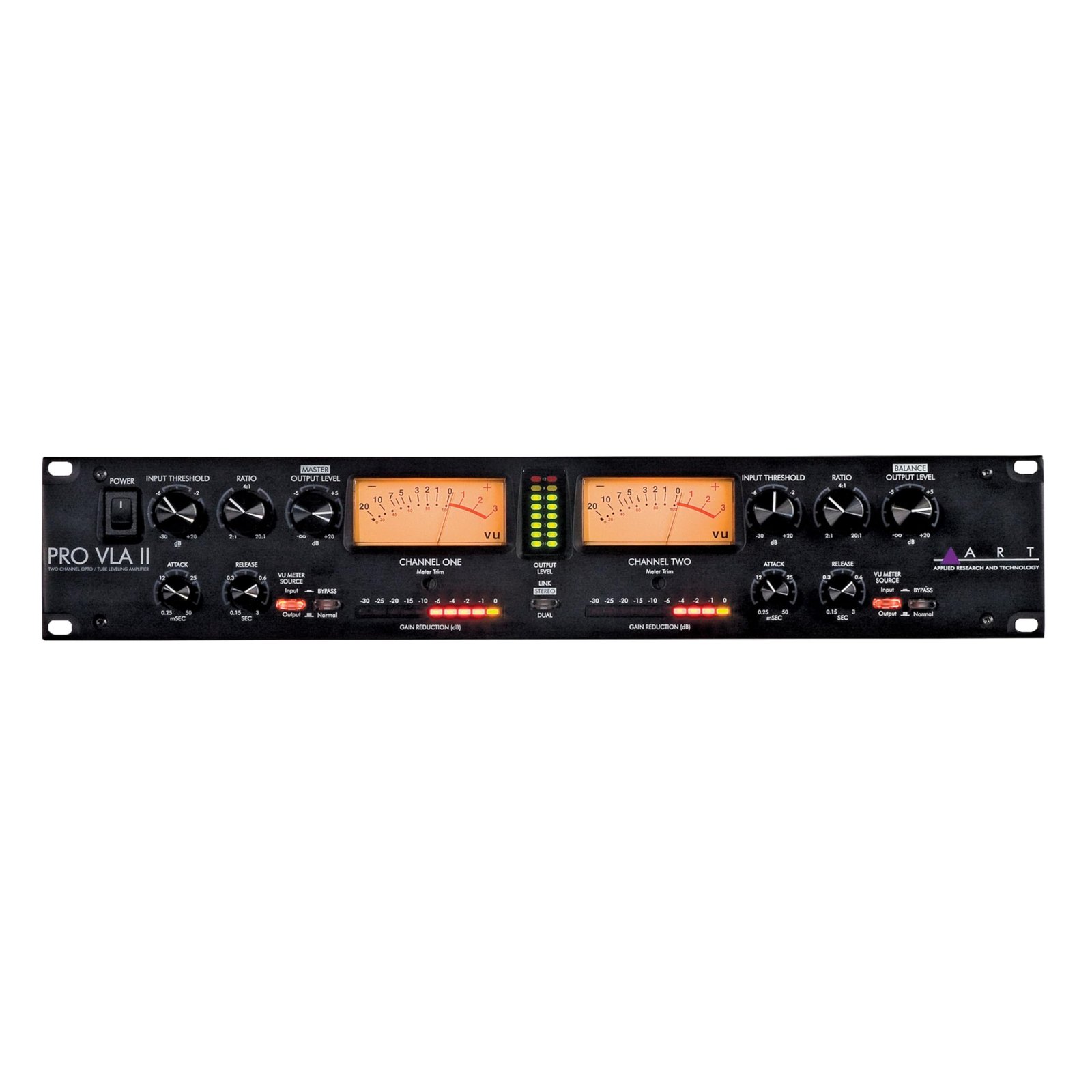Audio compressors are essential tools for both professional and hobbyist audio producers.
They work by controlling the dynamic range of an audio signal, making loud sounds quieter and quieter sounds louder.
This dynamic manipulation helps achieve a balanced and polished sound in recordings and live performances.
If you’re diving into music production or podcasting, understanding how to use a compressor can significantly enhance the audio quality of your projects.
When you’re selecting an audio compressor, some key features should be on your radar.
The type of compression, whether it’s tube, optical, or digital, can greatly influence the sound character.
Adjustability is crucial too—you’ll want a compressor with customizable threshold, ratio, attack, and release settings.
Consider the build quality and interface; the device should be intuitive and durable enough to endure regular use.
Factors like brand reputation, warranty, and customer support might also play into your decision-making process.
Pairing this knowledge with your specific audio needs can guide you to the right choice.
Top Audio Compressors
You’re diving into the audio world, and having a good compressor is key to achieving the perfect sound balance.
We’ve rounded up the top audio compressors that are making waves among sound enthusiasts.
Check them out to find the right fit for your setup!
Behringer MDX2600 Compressor
The Behringer Composer Pro-XL MDX2600 offers a versatile audio compression solution for both newbies and experienced users, delivering great value at an affordable price.
- Versatile range of features including a compressor, limiter, and gate.
- Integrates well into various audio setups, providing flexibility.
- Affordable choice for those seeking professional sound improvements.
- May require some technical know-how to fully utilize.
- Plastic build feels less sturdy than metal alternatives.
- Limited to two channels, which might not suffice for larger systems.
If you’re looking to enhance your sound quality without breaking the bank, the Behringer MDX2600 is a solid contender.
Its range of features like the expander and peak limiter can make a noticeable impact in various settings, whether it’s a home studio or live setup.
The integration of a de-esser and dynamic enhancer adds to its appeal, offering professional sound with ease.
Adding this to your audio equipment arsenal could streamline your setup.
The compact size and portability make it a great fit for smaller spaces or as part of a travel rig.
Just ensure you’re comfortable with setting up audio gear, as some technical knowledge might be needed to maximize its potential.
Consider the Behringer MDX2600 if you’re in the market for a cost-effective solution that doesn’t sacrifice quality.
Its balance of features and affordability make it a popular choice among budding and seasoned audio enthusiasts alike.
dbx 266xs Compressor
This is a great option if you’re looking to boost your audio quality with ease and flexibility.
- Easy integration into any setup
- Enhances vocal clarity
- Provides smooth and consistent performance
- Setup can initially seem complex
- May not suit all beginner needs
- Slight learning curve for optimal use
The dbx 266xs Compressor is geared towards those who want to elevate their audio game significantly.
Whether working in a studio or setting up for live shows, this piece of equipment provides exceptional sound quality.
Its Overeasy® compression technology ensures that your inputs are processed smoothly, delivering a refined and musical output.
The AutoDynamic™ controls on this compressor make it simple to get the sound you want without a fuss.
Whether aiming for clear vocals or sturdy instrumentation, the dbx 266xs lets you control your audio destiny.
Its strong integration capabilities mean it fits seamlessly into a variety of audio environments.
Visual feedback features help make any configuration process intuitive and efficient.
Thanks to its clear LED displays, you can quickly see what’s happening with your gain reduction, compression, and gate thresholds.
This can be especially helpful in fast-paced environments where accuracy and speed are vital.
ART SCL2 Dual Compressor
The ART SCL2 might be just what you need for versatile dynamic control without breaking the bank.
- Offers excellent flexibility with both auto and manual settings
- Dual channel operation or linked stereo provides versatility
- Precise LED level meters make it easy to monitor
- Power adapter may require modification for use outside the US
- Learning curve for optimal use
- Not the most visually appealing packaging
The ART SCL2 Dual Compressor stands out with its versatile features such as the auto/manual attack and release settings.
You can expect great flexibility, allowing you to achieve anything from smooth compression to more aggressive limiting, which makes it a solid choice for various audio processing needs.
When in stereo mode, the balance control option gives you that extra level of control over your mix.
The high-precision LED level meters are particularly useful, giving you clear indicators of gain reduction for both channels.
On the downside, you might face some challenges if using it internationally due to the power adapter requirements.
Also, mastering its full potential can take some practice, but once you’ve got the hang of it, it’s a rewarding venture for your audio setup.
ART Pro VLAII Compressor
For those looking to enhance audio quality with smooth compression, the ART Pro VLAII offers impressive tube-driven performance.
- Opto-compression provides a natural and musical sound.
- Tube gain stage enhances warmth and richness.
- Suitable for both studio and live applications.
- Bulky and takes up considerable rack space.
- There may be cheaper digital alternatives with similar functionality.
- Some units report issues over time with reliability.
The ART Pro VLAII Compressor shines in the world of audio enhancement, especially for those who cherish an analog touch.
Its tube compression circuitry delivers a warmth that feels natural and well-rounded.
From live sound engineering to detailed studio work, this device finds its sweet spot across various settings.
While tube-driven technology often evokes nostalgia and quality, it does demand a bit of space.
The ART Pro VLAII is not the most compact piece of gear, which might be a consideration for those with limited rack space.
Reliability is another important factor.
Some users have noted that performance might waver over time.
Examine your needs, space, and budget to decide if this robust compressor aligns with your setup.
Behringer MDX4600 V2 Compressor
A versatile choice if you need a reliable, multi-function compressor for various audio setups.
- Offers great audio enhancement without sacrificing clarity.
- Effective against unwanted noise with its smart gate circuitry.
- Four channels in one compact unit maximize space efficiency.
- Lacks direct attack and release controls, needing extra adjustment effort.
- Some users might find the controls unconventional for noise gating.
- Can be complex for beginners due to its advanced features.
Being a notable player in the audio equipment space, Behringer’s MULTICOM PRO-XL MDX4600 V2 offers a range of dynamic audio processing functionalities.
If you’re looking to enhance and refine your sound project, the intelligent features embedded in this unit work wonders in cleaning up audio and balancing sound levels.
The switchable dynamic enhancer is appreciated for keeping your audio lively, even under heavy compression.
Meanwhile, the interactive compressor design ensures smooth handling of different audio signals, balancing hard and soft knee characteristics.
This compressor is an excellent companion for managing multiple audio inputs like wireless mic systems, especially in setups that require effective noise suppression and anti-pumping features.
Whether in a studio or live setting, the MDX4600 V2 could be a valuable addition to your audio arsenal.
Buying Guide
When searching for the right audio compressor, it’s important to keep a few key things in mind.
Purpose: Are you using it for music production, live performances, or broadcasting? Each purpose may require different features.
Controls: Look for controls like threshold, ratio, attack, and release.
These allow you to shape the sound precisely and achieve the desired compression effect.
Types: Compressors come in different types such as VCA, FET, optical, and tube.
Each has a unique sound quality, so consider what best suits your audio needs.
Versatility: Consider whether you need a single-channel or multi-channel compressor.
Multi-channel might be beneficial if you’re dealing with complex audio setups.
Budget: Prices can vary greatly.
Determine your budget and look for options that offer the best features within your range.
Ease of Use: A user-friendly interface makes it simpler to get the results you want.
Some compressors have a steep learning curve, so choose according to your comfort level.
Portability: If you’re on the go, consider the compressor’s size and weight.
Compact models can be a great option for traveling musicians.
Quality: Pay attention to build quality and durability.
A well-constructed compressor will last longer and provide more reliable performance.
Frequently Asked Questions
When it comes to audio compressors, knowing how to choose the right one, understanding their use in real-world scenarios, and learning about specific settings are essential.
You’ll also want to explore the differences between compressors and limiters, various hardware options, and the types available.
How do you pick the best audio compressor for your needs?
Choosing the right audio compressor depends on what you’re trying to achieve with your audio tracks.
Consider whether you need it for music production, podcasting, or live sound.
Understand your workflow and match the compressor’s features with those needs.
Can you give some examples of audio compression in action?
Audio compression is used across music genres to manage dynamics, making vocals sit nicely in a mix or giving drums a punch.
In broadcasting, compression ensures consistent audio levels.
Podcasts often employ compression to even out volume differences.
What’s the difference between an audio compressor and a limiter?
An audio compressor reduces the dynamic range of audio, making loud sounds quieter and soft sounds louder.
A limiter, on the other hand, primarily prevents clipping by capping audio peaks at a certain threshold.
Both tools are essential in preventing distortion but serve slightly different purposes.
What do you need to know about audio compressor hardware?
Audio compressor hardware offers tactile controls that many find more intuitive than software.
It provides a distinct sound character that some producers prefer.
While software plugins are flexible, hardware units can add a particular warmth or color to the audio, often sought after in professional settings.
Which settings are ideal when using a compressor on your audio tracks?
Ideal compressor settings depend on your audio source.
For vocals, a fast attack and moderate release can smooth out performance.
Drums might benefit from a slower attack to preserve natural transients.
Experiment with the threshold, ratio, and makeup gain to achieve the desired sound.
What’s the breakdown of the different types of audio compressors available?
Several types of audio compressors are available.
These include VCA, FET, Optical, and Tube compressors.
VCA compressors are versatile and precise, while FET compressors are fast and colorful.
Optical compressors offer smooth compression with slow response, and Tube compressors are known for their warm, vintage sound.
Each type brings a unique character to your audio tracks.






